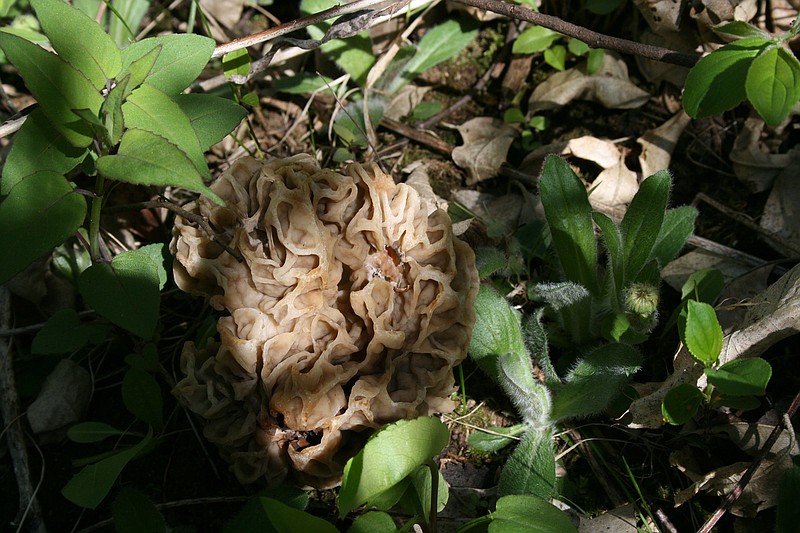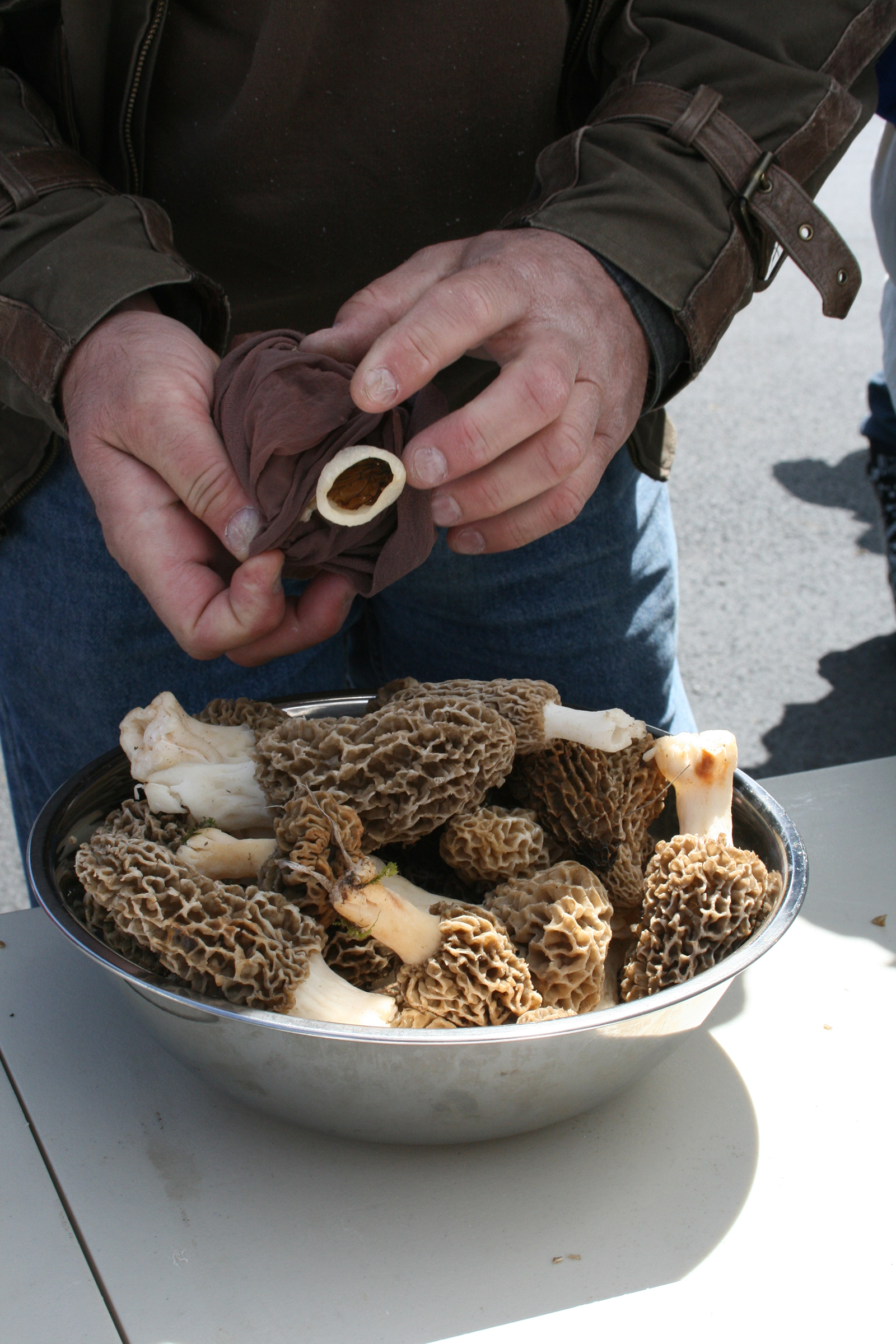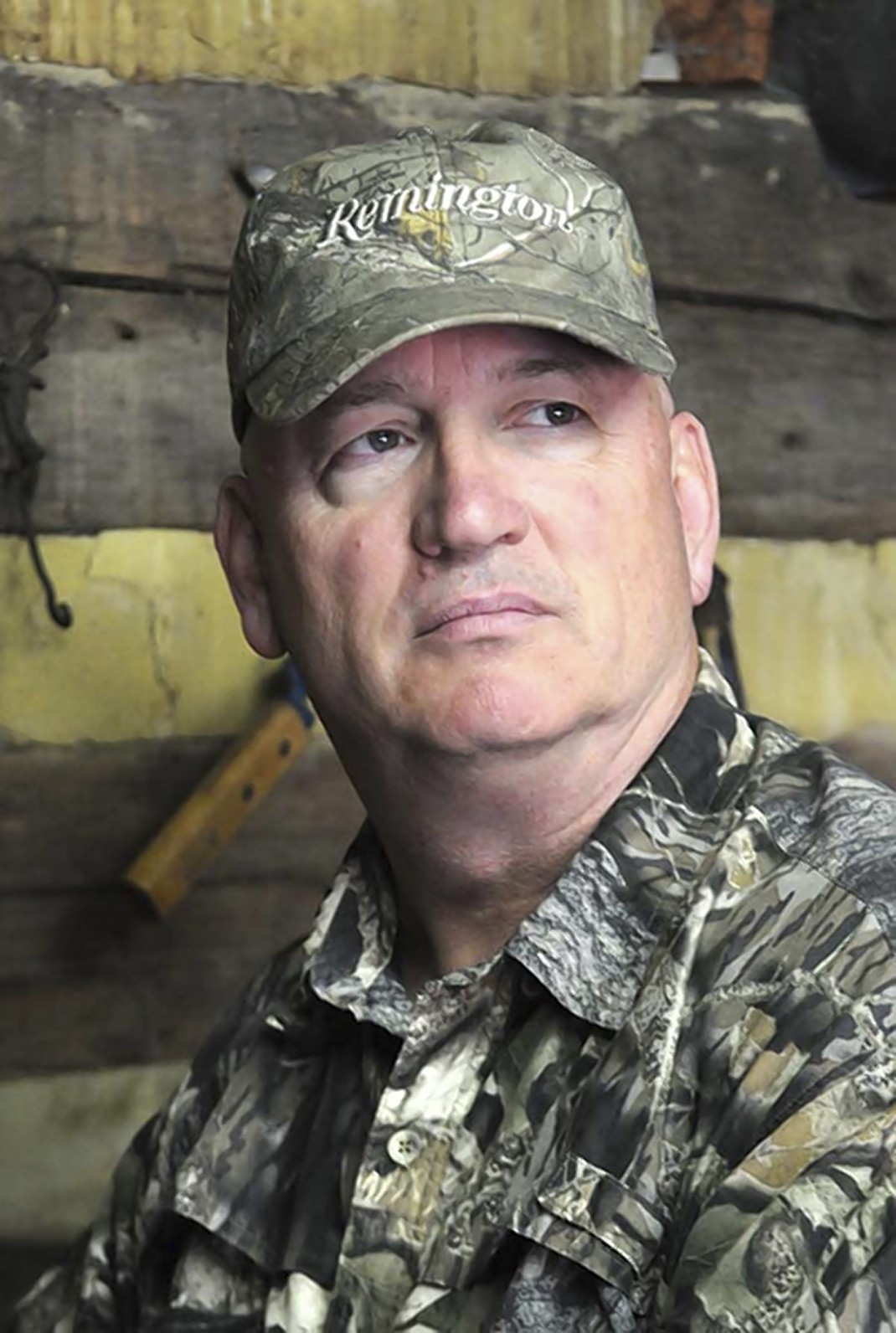Who isn't ready for spring after the long, hard winter we just had?
As mountain people living here in the Appalachians, we have many customs and traditions associated with a much awaited spring. Several of these traditions deal with food, of course, and most of us up here know about the wonderful ramp, the wild leek that grows in our mountains that many of us seek out as a spring tonic.
No less a traditional and wild spring food is the elusive morel. A member of the genus Morchella, it is an edible wild mushroom. Morels are easily recognizable by the honeycombed top of the mushroom that has a series of pits and ridges. Novice morel hunters are usually concerned about picking the wrong kind of mushroom and eating something that is poisonous. Morels really don't look much like anything else, though, so chances for a mixup are slim.
Hunting and eating morels are traditional rites of spring that many of us look forward to, and finding them may be as much fun as making a meal of them. Walking the woods and fields on a glorious spring day, to feel the sun on your back and hear the chorus of songbirds (and maybe a turkey gobble) - well, it may not get any better than that.
I wanted to get the word on morels from a real expert, so I spoke to Jack Cales from Summers County, West Virginia. Mr. Cales has seen his share of springs come and go and told me he has been hunting morels for most his life.
"My earliest memory of hunting for muggins is when I was about 7 years old," he said.
Muggins? That's right; muggins is what he called them.
"We always called them muggins. I don't know where that name came from," he explained.
That is another thing about morels: They have many different and colorful names. In some areas you will hear them called molly moochers, muggins, miracles, dryland shrimp or hickory chickens.
Cales told me his parents basically took him and his siblings to the woods and started looking for morels.
"Now there are certain places that are better than others," he said. "A stand of poplar trees may be the best, but also around wild cherry trees and close to an old apple tree could be good."
He also noted his family's good places to find morels, the real honey holes, were kept secret from others. The locations of these patches were handed down through the generations.
Once you've located a morel, how should it be harvested?
"Don't pull it up by the root; pinch it off at the ground and leave the bottom of the mushroom in the ground. This way another mushroom can grow there," Cales explained.
He also told me it's important the mushroom hunter use a mesh-type bag (like one used for onions or potatoes) for carrying his morels. He said that if you use a bag with holes in it, the seeds (spores) will fall off the mushrooms as you walk and scatter onto the forest floor. This will ensure you have future harvests.
As far as preparing and cooking morels, Cales told me he rinses his take of mushrooms, then soaks them in water for a while in the refrigerator. Morels usually are home to some tiny insects, and this will evict them. When the time comes to cook, he usually makes an egg batter with cornmeal, rolls the morels in this and then fries them.
"Some people use flour. There are many ways to fix them," said Cales, who made a point of noting morels have to be cooked and cannot be eaten raw.
Rolled in flour or cornmeal, fried in bacon grease or sautéed in butter, they are delicious, and like your first "mess" of ramps, feasting on morels is just another way to celebrate that spring is here.
Get out there and look for some muggins. You might even hear a turkey gobble.
"The Trail Less Traveled" is written by Larry Case, who lives in Fayette County, W.Va. You can write to him at larryocase3@gmail.com.


